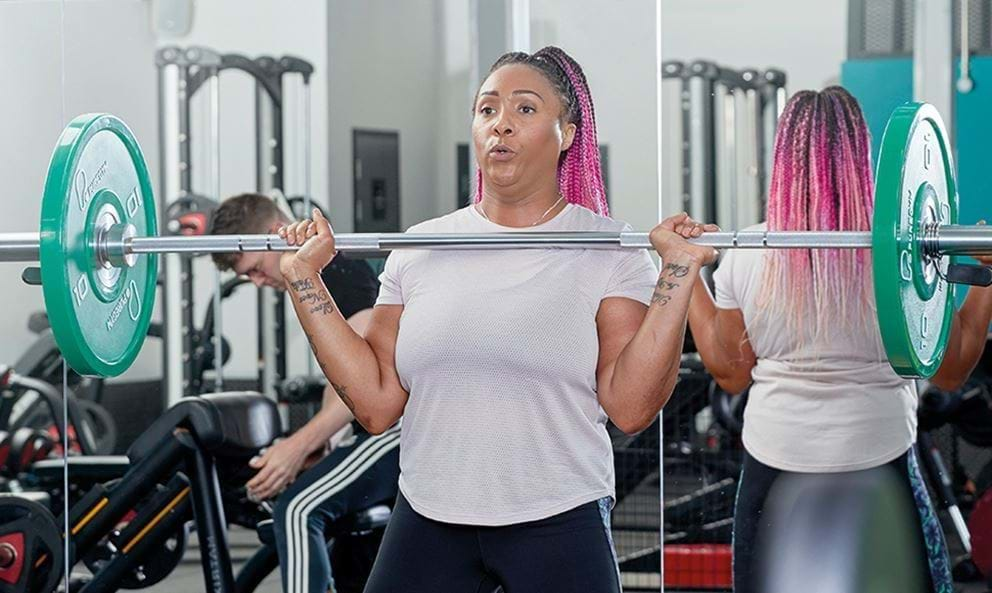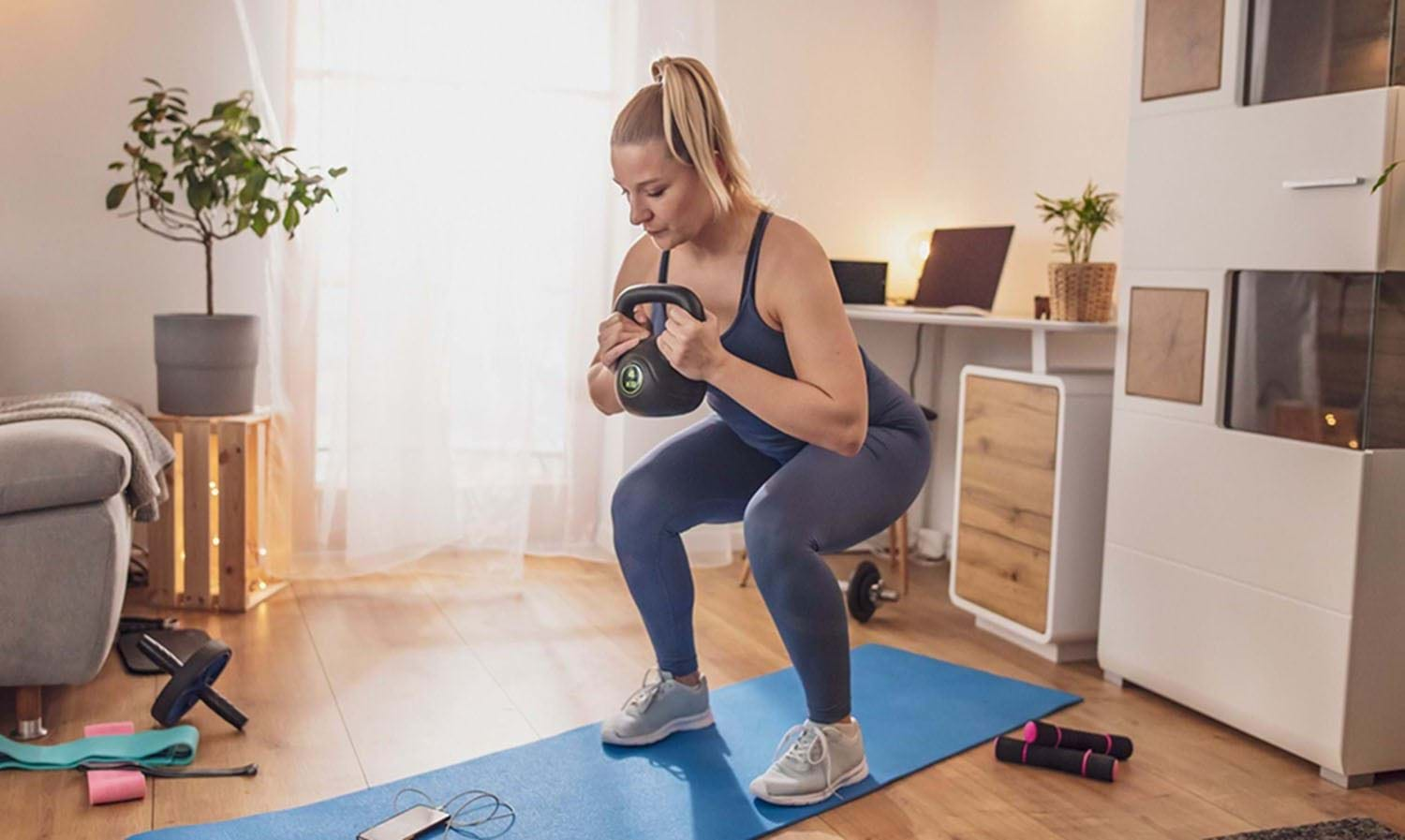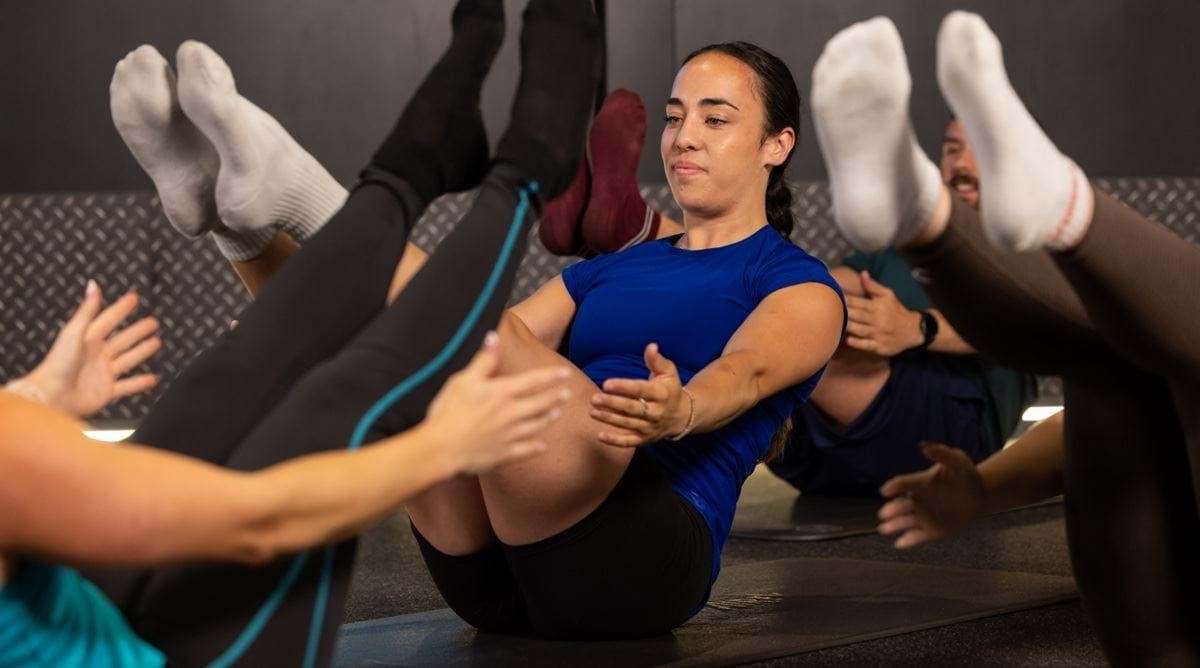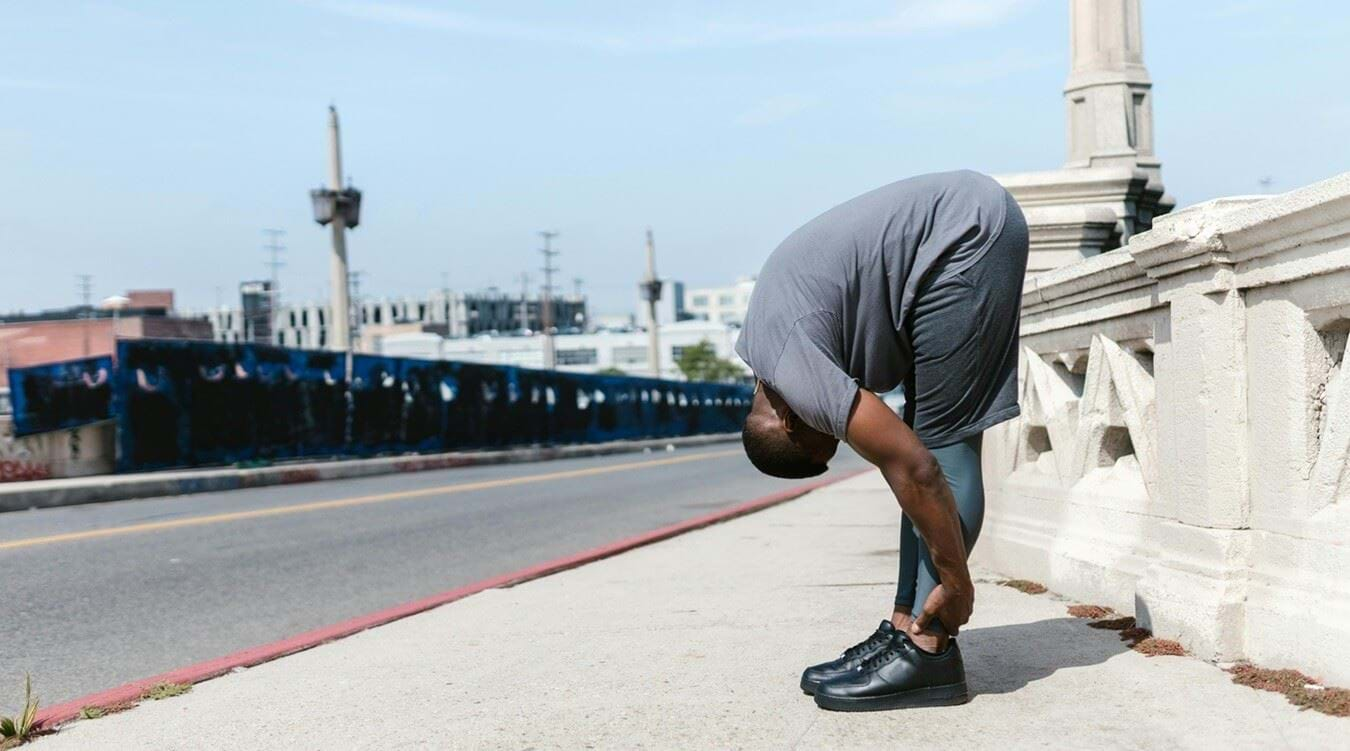Weight Training: What Is It And What Are The Benefits?

What is weight training?
Weight training is a form of physical training, which uses weighted objects, like dumbbells and barbells, or weight machines, like plate-loaded kit, to primarily build muscle or improve strength. It can also help to boost power, muscular endurance, and improve overall health. Weight training causes tiny microscopic tears in your muscles, which are then repaired to build stronger, leaner muscle. Read on to find more about different types of weight training and its benefits.
What are the benefits of weight training exercises?
There's a huge variety of advantages to weight training, and many individuals find it benefits them in unique ways. These are just a few of our favourite reasons why you should include weight training in your workout plans:
- Improved strength: With consistent training, you should be able to see great improvements to how much weight you can lift, push or raise. Not only is it satisfying to feel these improvements in the gym, but you'll also see the benefit when it comes to your daily routines, as well as confidence in your own abilities and strength. To focus on building strength, aim to complete fewer reps with more weight.
- Support everyday activities: Weight training in the gym can support your everyday life outside the gym, such as being able to carry heavy items (useful for carrying grocery shopping and perfect for moving house!), walking up stairs, or supporting improvements in other sports and activities, like running, football, rowing or tennis.
- Build muscle: Lifting weights consistently and over time can help to increase the size of your muscles, and in turn can help to improve strength and change the appearance of your body - which is why bodybuilders adapt this training method. With weight training, you're able to target the muscles you want to build through exercise selection. We understand not everyone is training to change their appearance or body composition but if you're looking to bulk up or tone areas of your body, weight training is necessary.
- Strengthen bones: After around the age of 30, you start to lose bone density. Putting force on your bones helps them stay strong and can help to reduce the chance of injuries.
- Better posture: Regular weight training targeting the full body can help to strengthen areas such as the back, shoulders and core, which can help you to sit and stand more upright, improving your posture and stance.
- Aid weight loss: When losing weight some of the weight lost can be muscle mass. As muscle helps to support and strengthen your body, you would probably want to retain as much as you can when losing weight so it's a good idea to include weight training into your fitness routine. Plus, your muscle mass can influence your basal metabolic rate, which influences how many calories you naturally burn at rest.
- Improve balance: Keeping leg and core muscles strong helps prevent weak and wobbling limbs. Weight training can help keep us sturdier on our feet and less likely to experience falls as we get older. It can also help to address any muscular imbalances, so for example if one arm is stronger than the other, you can perform exercise on the weaker limb to strengthen it.
- Reduce anxiety: Studies have shown that weight training in particular can help lessen symptoms of depression. On top of the confidence boosting benefits of seeing visible improvements in your abilities and your body, weight training also helps provide mood-enhancing endorphins that can ease anxieties and improve your mental wellbeing.
Weight training for beginners – what to know
- Increase weight gradually: Launching in with weights that are too heavy can lead to injury or strain. It's generally recommended that you start with your own bodyweight or very light weights and gently build up until you're feeling challenged. Squats and push ups are a great place to start, and you can integrate items like resistance bands for added resistance. Once you learn how to perform exercises with good form, you can add in dumbbells, kettlebells or even a tin of food from your cupboard in each hand to increase the weight. Just make sure you use weights or have resistance that challenges you without overdoing it.
- Focus on form: As just mentioned, this is your key starting point. Before you add in weight, make sure you're able to perform the exercises correctly and safely without any weights. Make sure you're engaging the correct muscles and using a weight that is appropriate for your needs and ability.. This will ensure you're getting the maximum amount of value from each movement and lowering the risk of injury. If you’re struggling with form, certain pieces of equipment, like a weight training belt, might help.
- Always warm up and cool down: This is how you can prepare your muscles and wake them up ahead of your workout, and also avoid the risk of injury. Dynamic warm ups which combine movement with stretches are a great way to increase your range of motion -- as an example lunges and knees-to-chest- movements can be a great warm up exercise to include on leg day. Meanwhile, static stretches, which involve holding a stretch for 20 to 30 seconds, offer an excellent cool down with the added benefit of boosting flexibility "How Can I Improve my Flexibility?"). Learn more with our do I need to stretch before and after exercise guide.
- Aim to weight train at least twice a week: You can incorporate weight training into all of your workout sessions, but a minimum of twice a week is recommended by the UK's Chief Medical Officer to really see results and enjoy the benefits.
- Don't forget rest days: Overtraining your muscles can lead to injury and damage, so it's important to allow your body time to recover. This is why many people focus on different body parts each day, with at least one day a week to rest. For beginners, two or three days weight training a week is a good place to start and you can work up to more as your strength improves. But listen to your body and pay attention to when it might need a day off.
- Work all of your muscles: Make sure you're including workouts that cover all of your major muscle groups -- abs, arms, legs, back, shoulders and hips. This helps to maintain a strong balance of your whole body.
Weight training at home

Not all of us have the luxury of a kitted out home gym, but that doesn't need to stop you from weight training in your house or flat with minimal equipment.
These are some of our favourite weight bearing exercises to give you some inspiration:
- Dumbbell squats: One of the best exercises for overall strength and conditioning, if you only do one bodyweight movement, let it be squats. With your feet slightly wider than hip width apart, turn your feet outwards slightly. Holding a dumbbell in each hand, palms facing the sides of each leg. Grip the floor with your toes for balance, look forward, keep a straight back and bend your knees like you're about to sit down, whilst pushing your hips backwards. Pause briefly before pushing upwards through your legs and feet to return to standing. You can make these more challenging by performing the exercise more slowly, using a resistance band, incorporating jumps or holding weights in your hands. This is a versatile and powerful weight training exercise -- find out more with our squats guide.
- Lying dumbbell chest press: This a great alternative exercise to work the chest and shoulders if you don't have an exercise bench at home. Lie with you back flat on the floor or on a mat if you prefer, with knees bent and feet planted on the floor. Holding a dumbbell in each hand either side of your chest with elbows touching the floor, lift your arms towards the ceiling until the dumbbells almost touch then slowly return to the start position.
- Dumbbell bent over rows: One of the muscles which people often find harder to target without gym equipment is the back. This is a great exercise which can be performed with just two dumbbells to target the area. With a dumbbell in each hand, bend over at a roughly a 45-degree angle. Turn the dumbbell inwards so that you're holding the dumbbells with an underhand grip - your palms should be above your knees. Keeping this position, brace your core and lift the dumbbells towards your hips, following the path of your thighs. Squeeze your back and lower the weight back to starting position. Make sure to keep your back straight at all times.
- Dumbbell reverse lunges: Lunges are a great exercise to strengthen the legs and work on your balance. This lunge variation can be performed within a small space (perfect if you don't have much space to workout at home!). Stand with feet hip-width apart, holding a dumbbell in each hand. Then step one foot backwards and lower your hips till the knee of the front leg is at a 90-degree angle. The back leg should be parallel to the ground with your heel lifted off the floor. Return to standing back pushing that back leg forward. Repeat this with the other leg.
Even if you don't have equipment, you can still get in a great workout using your own bodyweight. Or you can get creative by using items you have at home as weights, like filling a backpack with books!
Weight training at the gym
Once you're at the gym, you'll find a range of different facilities and options to improve and support your weight training. These tend to come in the form of either weights machines or free weights and which ones you use depends on the muscle group you're focusing on or the activity you want to perform. Examples of each include:
- Free weights: these are anything you can pick up and move around the gym, or that isn't attached to a machine. Examples range from smaller weights such as dumbbells and kettlebells, to larger medicine balls or sandbags, right through to heavier barbells and plates. You'll find that some have fixed weights, so you need to find the right weighted item for you, while others allow you to add different weights to them, so you can work through a range of strengths on one item. The bonus of most free weights is that they can easily be incorporated into other activities, such as aerobics or functional training, to boost the effectiveness and challenge of your exercise routine. Find out more with our Beginner's Guide to Training with Free Weights.
- Weights machines: are, as the name suggests, machines that enable the user to lift and move weights in a more supported way. Many, such as the seated chest press, leg press or shoulder press, also target a specific muscle set. The machines will offer ways to increase resistance or to drop and lower weights, while often the rest of your body is supported. Other examples also include cable machines, like the lat pull down or TRX. If you'd like more information, Lifting Weights: A Guide to Equipment at the Gym provides a good introduction to a range of different machines and weights equipment.
Get started with weight training today! If you're just getting started and you'd like some one to one advice and support, it could be worth some one-to-one sessions with a personal trainer -- they'll be able to guide you on the best form and weights to use to see the best results.


